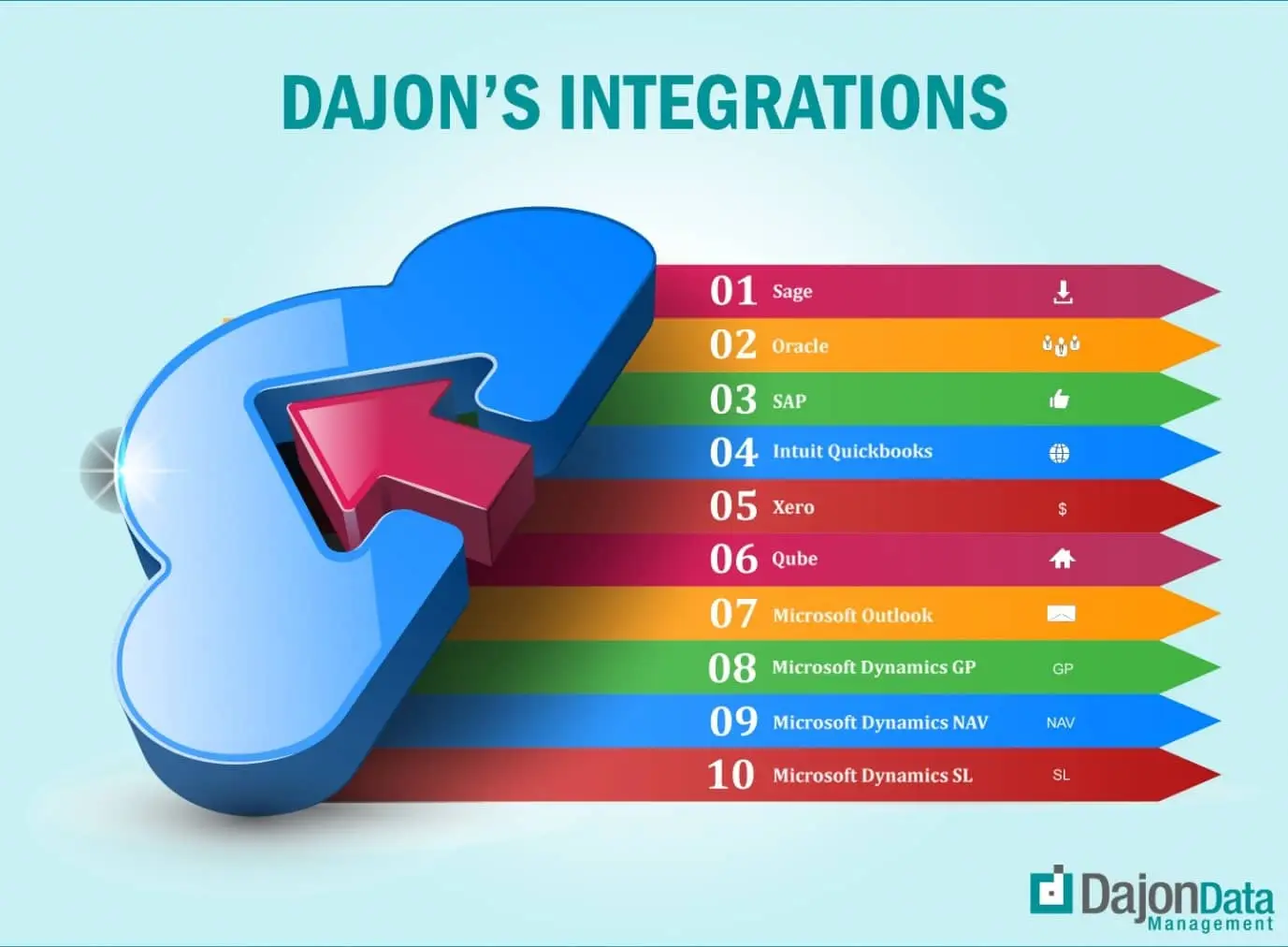They say old habits die hard, and that is twice as true in the corporate world. Trying to convince a business to change their processes and the way they work, and introducing them to a new system is a hard sell – the first reaction to abrupt change is resistance and annoyance.
Just ask any business that’s recently swapped their CRM or their sales automation system for instance: they will all agree that, although probably worth it down the road, it is a slow and rather painful process.
At Dajon, we understand all too well that what your company wants is to improve the way you work, not having to re-learn how to work. All the advantages of superior tools and software, none of the inconveniences of endless training sessions and manuals that leave you feeling as lost as an octopus in a garage.
Sounds like a sweet deal, right? We feel you – we all love a good win/win situation.
But at Dajon, we don’t just swing the bait in front of you – we deliver: Enter integrations.
What are integrations?
Integration means bringing small subsystems together into a single, central system that works as one. In a technological context, this involves stitching various areas of the business together so that the data contained in each becomes part of a larger system that easily collects and shares that data when needed.
Phew…that sounds boring.
How about we explain that in a simpler way?
Dajon’s Data Management solution takes all the software and tools your company already uses and brings them together so you can work faster, be more productive and keep clear communication between departments.
Think of it as a group of lovely virtual orphans being adopted into a big, happy family.
What are the advantages of integrations?
- Everything ‘happens’ in a single main program.
- Improved response times.
- Enhanced efficiency.
- Recorded data from different software programs can be monitored and used together
- Improves cohesion between teams – departments have access to other areas of the business.
So, will Dajon’s integrations work for my business? You tell me – have a look:

Our system consists of four software cores: workflow automation, document management, electronic forms and data capture.
A lot of software you already use can be integrated into the following programs:
Create invoices and validate processes with Sage or Xero, without having to access the software? Are you looking to implement pre-determined workflows that will streamline processes and reduce data entry errors? Check.
Want to create an automated workflow from the data in your Oracle database and access it from a centralised tool? Check.
Do you use QuickBooks and need to retrieve data for both indexing and process validation? Check.
Automatically export invoices and capture key data from Outlook? Check of course!
All of this under the same umbrella, a central system that can even be accessed remotely? Check, check, check.